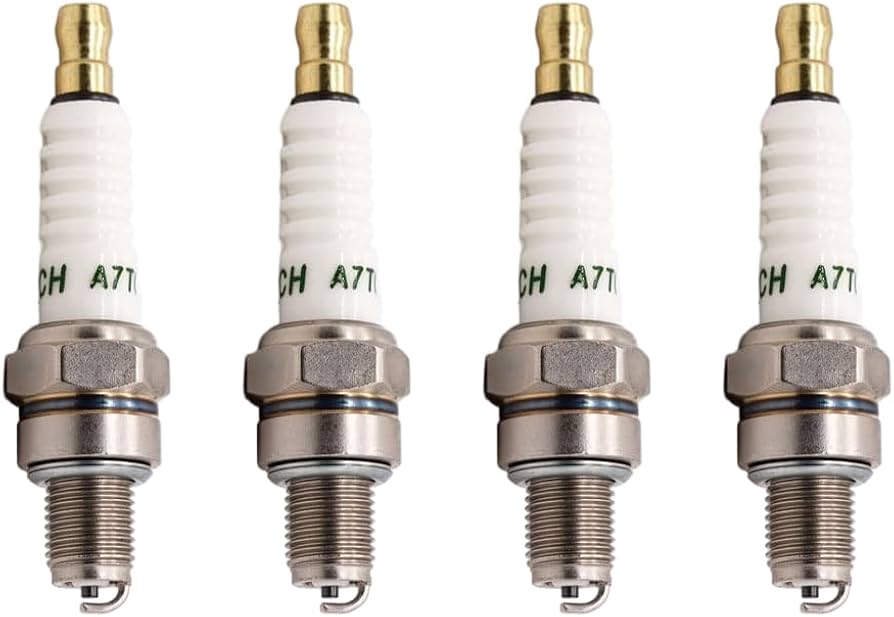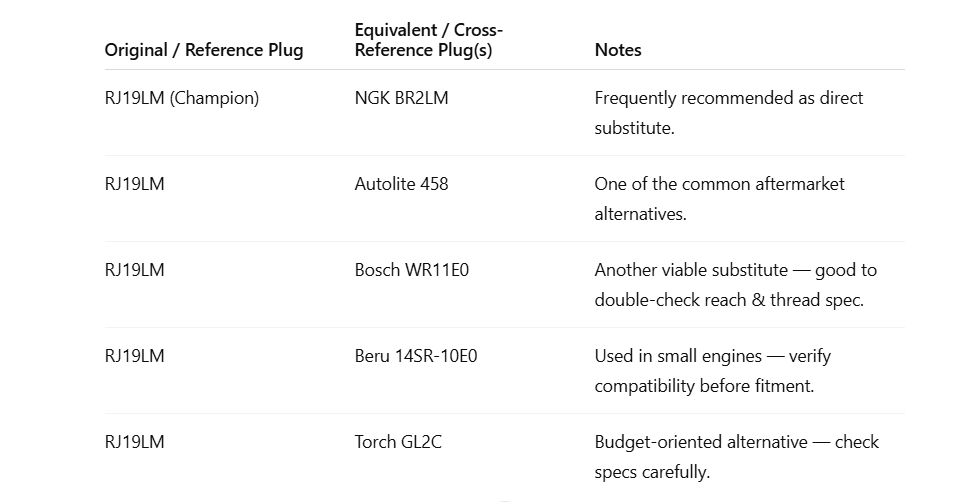Why do spark plugs break windows? Spark plugs break windows because their ceramic insulators are hard and brittle, concentrating impact force on a small area, causing the glass to shatter.
Imagine this: you find yourself in an emergency situation, perhaps trapped in a car or needing access to a vehicle quickly. What if, instead of smashing the glass with a conventional tool, someone told you that a small spark plug could shatter a car window with surprising ease? While it sounds like something out of an action movie, breaking windows with spark plugs is a real phenomenon, and it’s not as mysterious as it seems.
Spark plugs are essential components in internal combustion engines, and their unique design and materials make them unexpectedly effective at breaking tempered glass. But how exactly does a small, hard ceramic fragment from a spark plug have the power to destroy something as solid as a car window?
In this article, we’ll explain the science behind this phenomenon, the properties of the materials involved, and why spark plugs are more dangerous than you might think when used for this purpose.
Contents
What is a Spark Plug?
Before we delve into why spark plugs are capable of breaking windows, let’s first understand what a spark plug is and what makes it so special.
1. The Role of Spark Plugs in Engines
Spark plugs are critical components in internal combustion engines, which power most cars, trucks, and motorcycles. Their primary role is to ignite the air-fuel mixture in the engine’s cylinders by creating an electric spark. This spark is what allows the fuel to combust and release the energy needed to propel the vehicle forward.
While the process may sound simple, it’s the high temperature and pressure that the spark plug experiences within the engine that makes it unique. A spark plug needs to operate reliably under extreme conditions—high heat, pressure, and vibration—while also ensuring that the electrical spark can be delivered consistently to ignite the engine’s fuel.
2. The Construction of a Spark Plug
The spark plug consists of several components:
- Ceramic Insulator: This is the part that surrounds the central electrode and is typically made of a high-grade ceramic material, such as aluminum oxide. The ceramic insulator helps prevent electrical shorts and ensures that the spark plug functions properly in high temperatures.
- Central Electrode: This part conducts electricity to the spark plug and delivers the spark to the combustion chamber. It’s usually made of durable metals like copper, nickel, or platinum.
- Metal Shell: The metal shell of the spark plug is what connects the plug to the engine’s cylinder head and serves as a conduit for the spark’s energy.
The ceramic insulator, being hard and brittle, is crucial to understanding how spark plugs can break windows. Its properties are what enable it to create the necessary impact to shatter glass when used properly.
Why Do Spark Plugs Break Windows?
While spark plugs are essential components in engines, it may come as a surprise to learn that they can also be used to break car windows. This phenomenon has garnered attention due to the unique properties of the materials involved, as well as the mechanics of impact.
1. Material Hardness and Brittleness of Spark Plugs
One of the primary reasons spark plugs can break windows lies in the material they are made from. The ceramic insulator of a spark plug is incredibly hard, as it’s designed to withstand the high pressures and temperatures within an engine. However, while it is hard, it is also brittle.
This combination of hardness and brittleness means that the ceramic can absorb and store a significant amount of energy, and then release that energy in a concentrated way when it breaks. When a spark plug fragment is thrown at a window, its sharp edges can concentrate the force of the impact on a very small area, resulting in the glass fracturing.
2. The Properties of Tempered Glass
Most car windows are made from tempered glass, a type of glass that has been specially treated to be stronger than regular glass. Tempered glass is designed to withstand considerable force and pressure, which is why it’s commonly used in vehicles. However, tempered glass has a unique characteristic: while it is strong, it is also prone to shattering when an impact occurs at the right location.
When tempered glass is struck with a force that exceeds its structural limits, it doesn’t just crack or break into large pieces; it shatters into small, blunt pieces. This process happens because tempered glass is designed to break into small, less harmful fragments when it fractures. The ceramic insulator from a spark plug is sharp and hard enough to concentrate the impact energy on a small point, which makes the glass shatter rather than crack.
3. Concentration of Force
Another important factor in why spark plugs can break windows is the way the impact force is concentrated. When you throw a spark plug fragment at a window, the small size of the fragment means that the impact force is concentrated in a very small area. This concentration of force increases the likelihood of breaking the glass because the energy doesn’t have to be distributed over a large surface. It’s this small, sharp impact that disrupts the structural integrity of the glass, causing it to break.
4. Size and Velocity of the Fragment
The size and velocity of the spark plug fragment also play a significant role in its ability to break a window. Even a small piece of spark plug material can generate enough force to shatter glass when it’s thrown with sufficient speed. The harder and sharper the fragment, the more concentrated the impact is, and the greater the likelihood of the glass breaking. This is why spark plugs can be surprisingly effective in this role.
How Do People Use Spark Plugs to Break Windows?
Breaking a window with a spark plug is not something most people think about, but it has been used in certain situations, particularly in emergencies. Here’s a breakdown of how this method works and why people use it.
1. Emergency Use
In situations where a person is trapped inside a car and cannot escape, breaking the window might be necessary. While there are specialized emergency tools for such situations, a spark plug can sometimes serve as an emergency tool in the absence of other options. It’s especially effective because the ceramic material inside the spark plug can be broken into small fragments, which can then be thrown at the car window to break it.
2. The Process of Breaking the Window
Here’s how it works:
- Obtain a Spark Plug: Ideally, use a used spark plug. If you’re in an emergency situation, you may need to use a spark plug from the vehicle.
- Remove the Ceramic Insulator: Carefully break off the metal casing and remove the ceramic part of the spark plug.
- Throw the Ceramic Fragment: Aim for the corner or edge of the window. The edges of the window are more vulnerable than the center, making them easier to break.
- Ensure Safety: It’s important to take precautions when using this method. Always stand back and wear protective gear if possible.
Step-by-Step Guide: How to Break a Window with a Spark Plug
Breaking a window with a spark plug can be effective, but it’s important to follow a careful process to ensure both safety and success. Here’s a step-by-step guide:
- Obtain a Spark Plug: A used or broken spark plug is ideal. There’s no need to use a new one.
- Extract the Ceramic Insulator: Break off the metal casing of the spark plug to expose the ceramic insulator. Be cautious, as broken ceramics can be sharp.
- Throw the Ceramic Fragment: Hold the ceramic piece like a small rock and throw it at the corner or edge of the window. Aiming for the edges of the window is key, as this is where the glass is more likely to shatter.
- Stand Back and Stay Safe: Make sure to stand at a safe distance to avoid injury from the glass shards. Wear protective gear, including gloves and goggles if available.
Legal and Safety Considerations
Before attempting to break a window, it’s important to understand the legal and safety implications of using a spark plug for this purpose.
1. Legality
Breaking a window with a spark plug may be legal in certain emergency situations, especially if you need to gain access to a vehicle to prevent harm. However, using a spark plug to break a window for any other reason could be considered vandalism or destruction of property. It’s essential to ensure that your actions are legally justified.
2. Safety Concerns
Handling broken ceramics and shattered glass can be dangerous. Always prioritize safety and take precautions when attempting to break a window with a spark plug. Protective gloves and eyewear are highly recommended to avoid injury.
Alternatives to Spark Plug Window Breaking
While using a spark plug to break a window may be effective in some situations, there are safer and more reliable alternatives.
1. Emergency Window Breakers
Emergency window breakers are designed for breaking car windows safely and effectively. They are small, portable, and often feature a hardened steel tip that’s specifically made for shattering glass.
2. Professional Assistance
If you find yourself locked out of your car, it’s always better to call a professional locksmith or emergency services. They have the tools and expertise to open the vehicle without causing damage.
Related Article
How Many Spark Plugs in a 5.7 Hemi
Glow Plug vs Spark Plug
Are Autolite Spark Plugs Good?
Frequently Asked Questions
Here are some FAQs about spark plug breaking a window –
1. Is it illegal to break a window with a spark plug?
Breaking a window with a spark plug can be illegal if done without just cause. It may be considered vandalism unless it is done in an emergency.
2. How do I safely break a window with a spark plug?
To safely break a window with a spark plug, aim for the edges or corners of the glass and use protective gear such as gloves and goggles to avoid injury.
3. Why does a spark plug break windows so easily?
A spark plug’s ceramic insulator is hard and brittle, which concentrates impact force on a small area, causing the glass to break.
4. What are better alternatives to breaking a window with a spark plug?
Using emergency window breakers or calling professional services is a safer and more reliable option for breaking a window in a non-emergency situation.
Conclusion
The ability of a spark plug to break a car window is rooted in the unique combination of materials involved. The hardness and brittleness of the ceramic insulator, combined with the properties of tempered glass, make it possible for a small spark plug fragment to cause a car window to shatter.
While this method can be effective in emergency situations, it should only be used with caution and in legally justifiable circumstances. Knowing the science behind this phenomenon is key to appreciating the mechanics of impact and material properties at play. Always prioritize safety and consider safer alternatives whenever possible.




